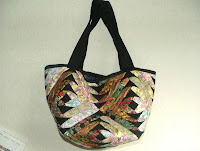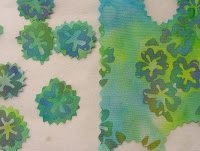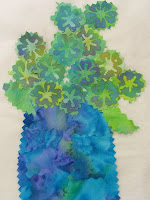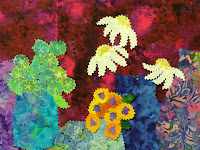I have had a lovely creative time this week but in a totally different direction. I was asked recently if I wanted to exhibit some work in a local village art exhibition at the end of this month. The message has got around locally that I am a ‘bit artistic’ so would I like to be included? I think when my husband passed on the message, it was a bit tongue-in-cheek, but I surprised him by accepting the challenge. So this week, I needed to prove to myself that I could actually come up with the goods.
I have been going to art class for a few years now but we have never done any of what you might call ‘normal painting’. It has largely been experimental but I have learned the principles of drawing, the mechanics of the colour wheel, tonal studies, painting with acrylics, watercolours, pastilles, bleach, chalks, charcoal ….. you name it, and I have probably done it. But can I actually paint a picture?
Yes I can and here’s the evidence!

Pansies
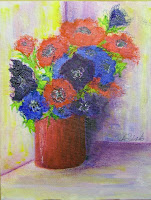
Anemones

Roses

Lilies
They can only be described as mixed media. I started with a rough sketch and then used the same palette of acrylic colours for all four paintings: alizarin crimson, ultramarine and cadmium yellow. I began by mixing the acrylics with a lot of water to do an under wash across the whole canvas, rather like using watercolour. Then I used thicker acrylic paint to build up the colour and add more detail. After that, I thought the paintings appeared a bit flat, so I used inks to intensify the colours and felt tip pens to add intricate detail. I then decided that the completed paintings looked too controlled and structured, so I used pastilles to smudge the colours.
I still don’t know what I’m really doing but I like the results and that to me is the basis of art. These will be framed and entered into the local art show and if they don’t sell, I have 4 Christmas presents in stock!!!!!
I want to continue to play with my embellishing (felting) machine and so decided to reproduce one of my paintings as a textile. I chose the Pansies and, after drawing a rough sketch onto felt, I began adding fibres, ribbons, cord and threads. I’m not sure what I am doing but I am pleased with what has happened so far. I look forward to continuing with this next week.

Stage 1

Stage 2

Stage 3














